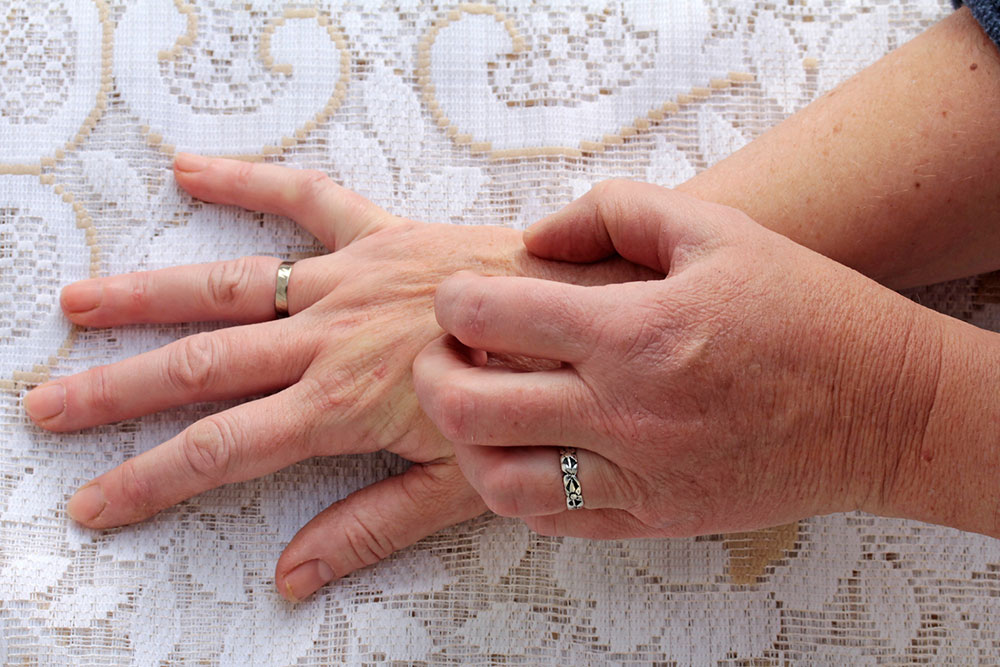Scabies – Symptoms, Causes, and Treatment Options

Scabies is a highly contagious skin condition that spreads easily among people who live in crowded areas or close-knit communities. Early diagnosis and treatment can prevent the development of serious complications.
What is scabies?
Scabies is a skin condition with symptoms like severe itching and a rash that can spread all over the body. It is caused by a small mite that burrows just underneath the skin, leading to the formation of tiny bumps all over the body. Scabies can lead to complications if it is not detected and treated on time.
You can run an internet search for photos of scabies rashes to understand how these rashes look.
You can see a widespread rash and reddened skin in these scabies rash photos. What’s not visible to the human eye is the infestation by a microscopic mite housed underneath the skin.
Symptoms of scabies
The most common signs and symptoms of scabies are extreme itchiness that may worsen at night and small, red blisters or bumps all over the skin. In adults and older children, these bumps are all over the body but mostly in the area around the fingers, armpits, waist, wrists, knees, breasts, buttocks, and male genitalia. In infants or babies, this condition is seen on the scalp, face, feet, or palms. A search for photos of scabies rash in babies will show you the areas in which this rash typically forms.
Symptoms may not appear for up to six weeks after a person has been infected. However, in the case of people with a prior scabies infestation, the signs may show up after a few days. The condition can worsen even if symptoms are not visible.
In the initial stages of the condition, scabies may often mimic other skin rashes caused by acne or mosquito bites. The main difference is the constant itching a person will experience. Usually, this is not the case in acne or rash caused by mosquito bites. The other defining mark is the appearance of reddened and raised lines on the skin that look like tracks. These lines form when the female mites create tunnels and lay eggs under the skin. Take a closer look at the scabies rash photos to understand the appearance of this symptom.
If one does not get the right treatment for these symptoms, it can lead to complications such as impetigo which is a bacterial infection that develops due to constant scratching and open sores. A person can also develop a more dangerous form of scabies known as crusted scabies. This condition can affect vulnerable groups of people such as patients with a weak immune system, those suffering from health conditions like HIV or leukemia, extremely ill people or the elderly in nursing homes and hospitals.
Causes of scabies
A diagnosis by a medical professional will reveal a tiny, microscopic mite that causes this skin condition. This mite, known as Sarcoptes scabiei, is a female mite that digs under the skin and makes a tunnel where it lays eggs. After the eggs hatch, the larvae go up to the skin’s surface and spread to other areas of the body. An allergic response to the mites, eggs, and the waste produced by these mites causes the sensation of intense itching.
A person may develop scabies after close physical or sexual contact with another infected person. Scabies can also spread due to sharing clothes or bedding with a scabies patient. Usually, a person doesn’t contract this condition from animals. While animals can pass on certain species of mites, it doesn’t cause the same kind of reaction that scabies does.
Treatment of scabies
The treatment of scabies mainly focuses on the elimination of the mites. Doctors will usually suggest a combination of topical creams and other prescription medication. One needs to apply the ointment or cream to the whole body and leave it on the skin for a few hours. Patients can repeat this treatment if new rashes start appearing. It may take several weeks for the itching to go away completely.
Some of the medication for scabies includes permethrin cream, lindane lotion, crotamiton, and an oral medication called ivermectin. However, small babies, pregnant women, and those with grave health conditions should not take these medications. For such vulnerable individuals, it is best to consult the doctor about the safest and best treatment options.
As scabies is extremely contagious, the loved ones of a scabies patient should follow a similar course of treatment even if they do not exhibit the signs and symptoms of the condition. Family members can consult a doctor to get suggestions about the best course of action.
It is essential to wash all clothes or bedding thoroughly. For items that are not washable, one should seal them away for a week or more to kill off any remaining mites or eggs. One should also vacuum the carpets and rugs thoroughly on the day that the treatment begins.